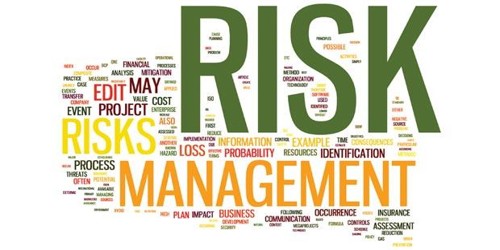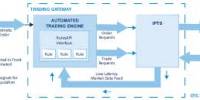Measurement of market Risk
Risk can be defined as the possible outcome of an event or an investment return regarded to be detrimental to an investor rather than beneficial. Generally we use the term risk to refer to the chance that some unfavorable event will occur. For example, if you invest in speculative stocks (or really any stock), you are taking a risk in the hope of making an appreciable return. Risk reflects the chance that the actual return on an investment may be very different than the expected return. One way to measure risk is to calculate the variance and standard deviation of the distribution of returns.
Market risk is the risk that a security is exposed to through daily price fluctuations (volatility) in a market’s movements that are most commonly associated with stocks and options. It belongs to the systematic type of risk and can’t be eliminated through the diversification of investments.
The Standard Deviation(S) of returns can be determined by using this formula:
Standard Deviation= √[∑(Return – average return) / 2√(n-1)]
Here return means market return and n means no of observation.
Determination of Co-efficient of Variation and Beta:
One of the most common measures of an investments volatility in relation to the market, or market risk, is the beta, also known as the beta coefficient. It is calculated using a statistical method called regression analysis that produces a number indicating how closely an investment’s market prices correlates to those of the whole market, or a market index considered representative of the market.
Another useful measure to evaluate risky investments is the co-efficient of variation (CV), which is the standard deviation by the return. The Co-efficient of variation shows the risk per unit of return, and it provides a more meaningful basis for comparison when the returns on two alternatives are not the same.
Coefficient of Variation = CV = SD/Return.
In this paper for calculating risk I used both standard deviation and co-efficient of variation. By analyzing the previous year risk and return of a company an investor can take the decision where he would invest.
Beta = (Co-variance between stock market return & Index Return / Variance of Index)
Beta is a measure of market risk.
Coefficient of Correlation =Co-variance / SD stock x Dividend)
We have calculated coefficient of correlation between stock return and overall market return and between stock return with sector return. It is also mentioned that we only consider monthly changes of market price of stocks and index (sector and all share price index).
Under these categories are different classifications that involve unique aspects of financial markets. The most common types of market risks include interest rate risk, equity risk, currency risk and commodity risk.
Information Sources:
















